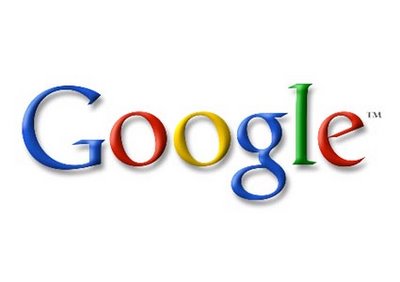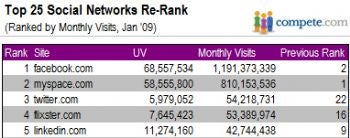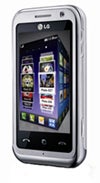Microsoft warned enterprise customers this week that the migration path from XP to Windows 7 won't be any easier than it is to Vista, and offered recommendations for how companies can move from older versions of Windows to one of its newer client OSes.
 "Moving from XP to Windows 7 is not a magic bullet," said Gavriella Schuster, a senior director of Windows product management, in an interview Tuesday. "You have the same level of application compatibility from XP to Windows Vista or Windows 7."
"Moving from XP to Windows 7 is not a magic bullet," said Gavriella Schuster, a senior director of Windows product management, in an interview Tuesday. "You have the same level of application compatibility from XP to Windows Vista or Windows 7."
Enterprise customers who would have had to replace applications in a move from XP to Vista will still have the same task when they move to Windows 7, she said. However, if customers have already made the leap to Vista, it will be easier to move applications to Windows 7 because it's on essentially the same code base, she said.
In a company blog post attributed to Schuster, Microsoft made recommendations to business customers to help them decide whether they should upgrade to Vista now or wait for Windows 7, which is expected later this year or, at the latest, early next year.
Many companies chose to stick with Windows XP instead of upgrading to Vista, causing Microsoft to keep new PCs with XP pre-installed in the market longer than originally planned. Once Windows 7 is released, which most expect before the end of the year, Microsoft will have two OSes built on essentially the same code base in the market at the same time, and Schuster said customers have asked the vendor how to choose between them.
To no one's surprise, Microsoft recommends that business customers still running XP or older versions of the OS upgrade as soon as possible, citing security and remote-management capabilities in both Vista and Windows 7 that weren't baked into the original XP release.
XP also was released before the majority of PCs in enterprises were laptops, and both Vista and Windows 7 have features that allow IT managers to better manage and secure laptops and mobile devices for the type of mobile workforce found in many enterprises today, Schuster said.
"When you think about Windows XP in that context -- it came out in 2001, when less than 10 percent of devices were laptops," she said. "There wasn't ubiquitous broadband. There weren't the levels of compliance and regulatory requirements. There weren't data protections."
What may be surprising in Microsoft's message, however, is that the company doesn't care which of its newer OSes customers move to -- Windows Vista or Windows 7 -- as long as they do what's best for their individual IT environments.
"What strikes me is that Microsoft is being fairly pragmatic about what the options are for customers," said Al Gillen, an analyst with IDC. "Microsoft seems to recognize the reality that customers aren't going to do what Microsoft tells them to do. They're going to do what's right for them."
Indeed, Schuster said Microsoft is "agnostic" about which OS customers upgrade to. She said Microsoft is just trying to set expectations for any upgrade that may be planned or in progress, so that customers aren't surprised by problems or complexities they may encounter.
Customers should examine their application and hardware environments closely to see which would be the best fit for them. "It really depends on the environment," Schuster said.
She did have some advice for customers depending on what OS they are currently running, and whether or not they have begun migrating to Vista already.
For customers still running Windows 2000, "they clearly need to move fast and need to move to Windows Vista," she said. Extended support for Windows 2000 ends in April 2010, and it will take a company 12 to 18 months to complete the upgrade. "They can't wait for Windows 7," Schuster said.
For companies that are halfway through a migration to Windows Vista Service Pack 1, they should continue that migration as planned, she said. However, if a company has begun piloting Vista and is not yet halfway through the migration process, moving to Vista Service Pack 2 -- which should be generally available in April -- is a better option.
Some customers have already said they plan to wait for Windows 7, and Microsoft is not recommending they change that course.
When Windows 7 is available, it won't be the first time Microsoft will have two OSes on the same code base in the business market at the same time. Windows 2000 Pro and Windows XP Pro were built on the same code base as well, and many business customers on Windows 98 waited for XP instead of moving to 2000, Gillen noted.
Windows 7 is essentially the second release of Vista, an incremental update that will include some usability features but not "cause a rift for Windows Vista applications" during a migration, he said.
It will essentially be about as painful for customers to move from XP to Vista as it will be to move from XP to Windows 7, Gillen said, corroborating Schuster's warning. He agreed, too, that a migration from Vista to Windows 7 will be far easier.
However, Gillen said that Microsoft's argument that customers should pick one or the other is more in its own self-interest than an actual necessity for enterprise customers.
"[Microsoft] is trying to use every lever they have to try to encourage customers to move," he said. "But customers are going to make their own decisions based on [their own needs]." Some customers may find they can stay on XP indefinitely as long as they can continue to patch and support their applications on it. Microsoft ends extended support for XP in April 2014.
One company that has already migrated to Windows Vista, and plans to upgrade to Windows 7 as well, is computer reseller Heartland Technology Solutions in Harlan, Iowa. Heartland is a Microsoft partner that participated in the Vista beta-testing program.
Arlin Sorensen, CEO and president of Heartland, said that Vista increased worker productivity, particularly because of its the improved desktop search functionality.
Heartland serviced about 1,900 individual small-business customers last year, each with its own set of unique IT needs, he said. However, one of the most common problems customers needed help with was finding documents or files they couldn't locate.
"This is where the ability to search more quickly and efficiently for files immensely improved productivity," Sorensen said.
"The whole Vista experience has helped in simple but very productive ways," he said. "There's a significant amount of time people waste looking for documents."








 Reconfigurable baseband processors aren't a new concept by any stretch of the imagination, but so far, the idea that we might move from CDMA to HSPA to LTE to WiMAX on our handsets with little more than some creative firmware flashing is -- sadly -- science fiction. Samsung's taking that dream a little closer to reality this week by revealing that it's licensing Sandbridge Technologies' software radio tech for integration in future devices; odds are, they're looking at this as a power play for reducing manufacturing expenses and not as a too-easy way for users to switch network technologies on the go, but as the old adage goes, "where there's a hacker, there's a way." Once this is implemented, the only remaining hurdle will be configurability of the actual frequencies in use -- it's dictated as much by the antenna as it is by the baseband itself, so we'll have to wait for tiny antenna robots before that sitch works itself out.
Reconfigurable baseband processors aren't a new concept by any stretch of the imagination, but so far, the idea that we might move from CDMA to HSPA to LTE to WiMAX on our handsets with little more than some creative firmware flashing is -- sadly -- science fiction. Samsung's taking that dream a little closer to reality this week by revealing that it's licensing Sandbridge Technologies' software radio tech for integration in future devices; odds are, they're looking at this as a power play for reducing manufacturing expenses and not as a too-easy way for users to switch network technologies on the go, but as the old adage goes, "where there's a hacker, there's a way." Once this is implemented, the only remaining hurdle will be configurability of the actual frequencies in use -- it's dictated as much by the antenna as it is by the baseband itself, so we'll have to wait for tiny antenna robots before that sitch works itself out.


















 How many versions of Windows 7 can a netbook run? Three, and possibly more, according to HP's Kyle Thornton, who recently attempted to "clarify" the situation in an interview with Computerworld. Those include in the main Professional and Home Premium editions, as well as the low-end Starter edition which, among other things, is limited to running no more than three applications at a time. According to Thornton, HP has also been testing Windows 7 Ultimate on its Mini netbook line, although it apparently isn't saying if it actually intends to offer it on future netbooks or not. But that's not all. Thornton also says that HP "hopes" that it'll be able to continue to offer both Windows XP and Vista Business on its business-oriented netbooks even after Windows 7 ships... and ships, and ships.
How many versions of Windows 7 can a netbook run? Three, and possibly more, according to HP's Kyle Thornton, who recently attempted to "clarify" the situation in an interview with Computerworld. Those include in the main Professional and Home Premium editions, as well as the low-end Starter edition which, among other things, is limited to running no more than three applications at a time. According to Thornton, HP has also been testing Windows 7 Ultimate on its Mini netbook line, although it apparently isn't saying if it actually intends to offer it on future netbooks or not. But that's not all. Thornton also says that HP "hopes" that it'll be able to continue to offer both Windows XP and Vista Business on its business-oriented netbooks even after Windows 7 ships... and ships, and ships.


 Not quite an ultraportable, but not quite a behemoth -- the 14-inch ASUS N81Vg fits nicely between the two laptop extremes, and given that it's the first to house NVIDIA's GeForce GT 120M graphics card, even gamers can feel free to sneak a deathmatch or two in between conference calls. The rig itself can be ordered with one of many Core 2 Duo processors, up to 4GB of DDR2 RAM, upwards of 500GB of hard drive space, an optional Blu-ray burner, 1.3 megapixel webcam and a battery good for three to four hours. The newfangled 120M GPU features NVIDIA CUDA technology, 32 processing cores, DirecX 10 support, 1080p video playback and 110 gigaflops of computing power. Per usual, ASUS is keeping quiet when it comes to pricing and release details, but it ought not be long now, tiger.
Not quite an ultraportable, but not quite a behemoth -- the 14-inch ASUS N81Vg fits nicely between the two laptop extremes, and given that it's the first to house NVIDIA's GeForce GT 120M graphics card, even gamers can feel free to sneak a deathmatch or two in between conference calls. The rig itself can be ordered with one of many Core 2 Duo processors, up to 4GB of DDR2 RAM, upwards of 500GB of hard drive space, an optional Blu-ray burner, 1.3 megapixel webcam and a battery good for three to four hours. The newfangled 120M GPU features NVIDIA CUDA technology, 32 processing cores, DirecX 10 support, 1080p video playback and 110 gigaflops of computing power. Per usual, ASUS is keeping quiet when it comes to pricing and release details, but it ought not be long now, tiger.













 In the 1970s, NASA conducted a number of summer studies to create artwork depicting the future of
In the 1970s, NASA conducted a number of summer studies to create artwork depicting the future of 






